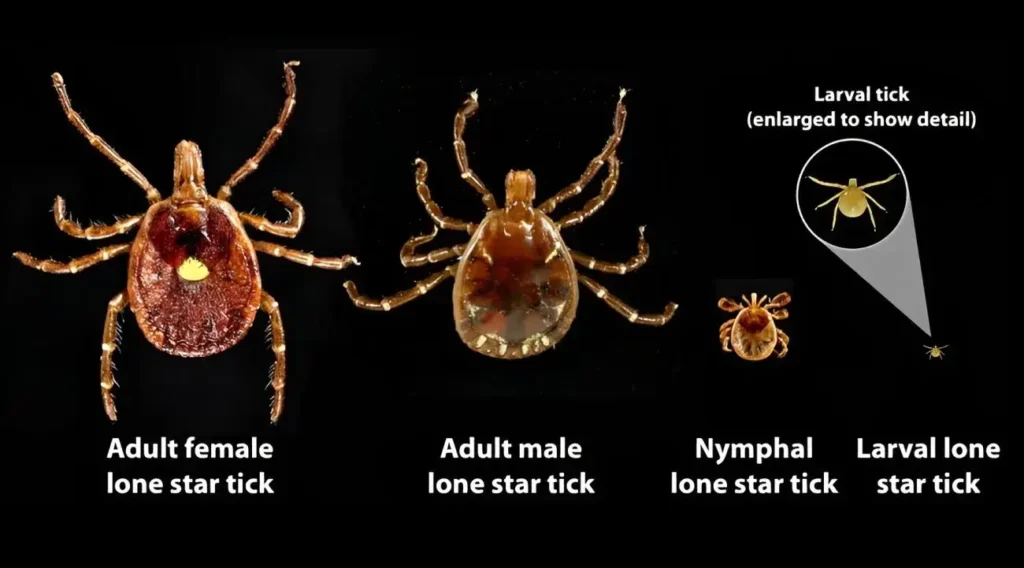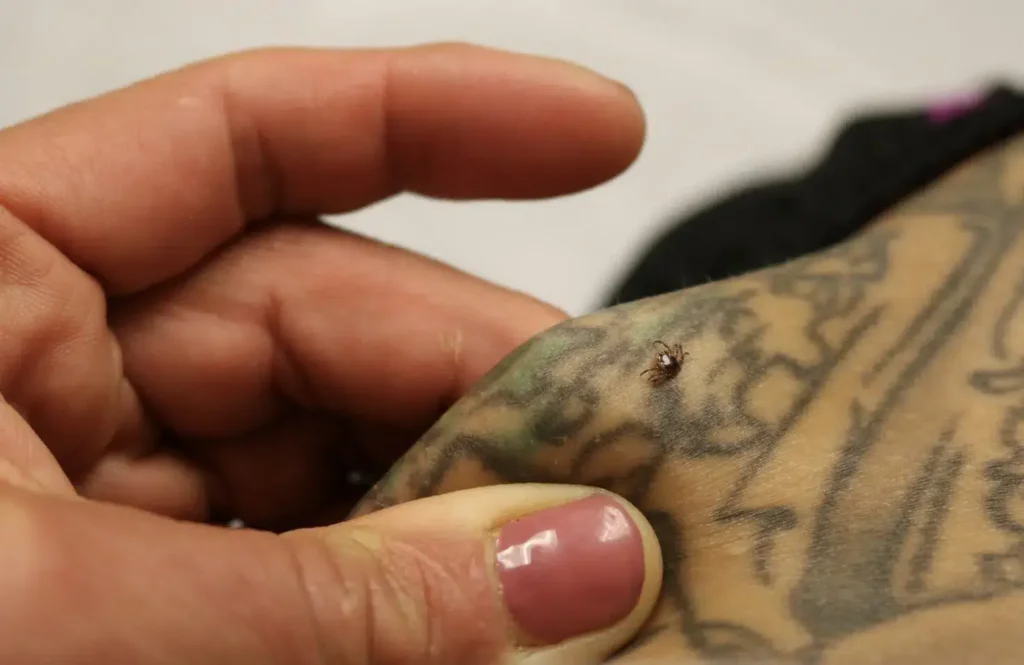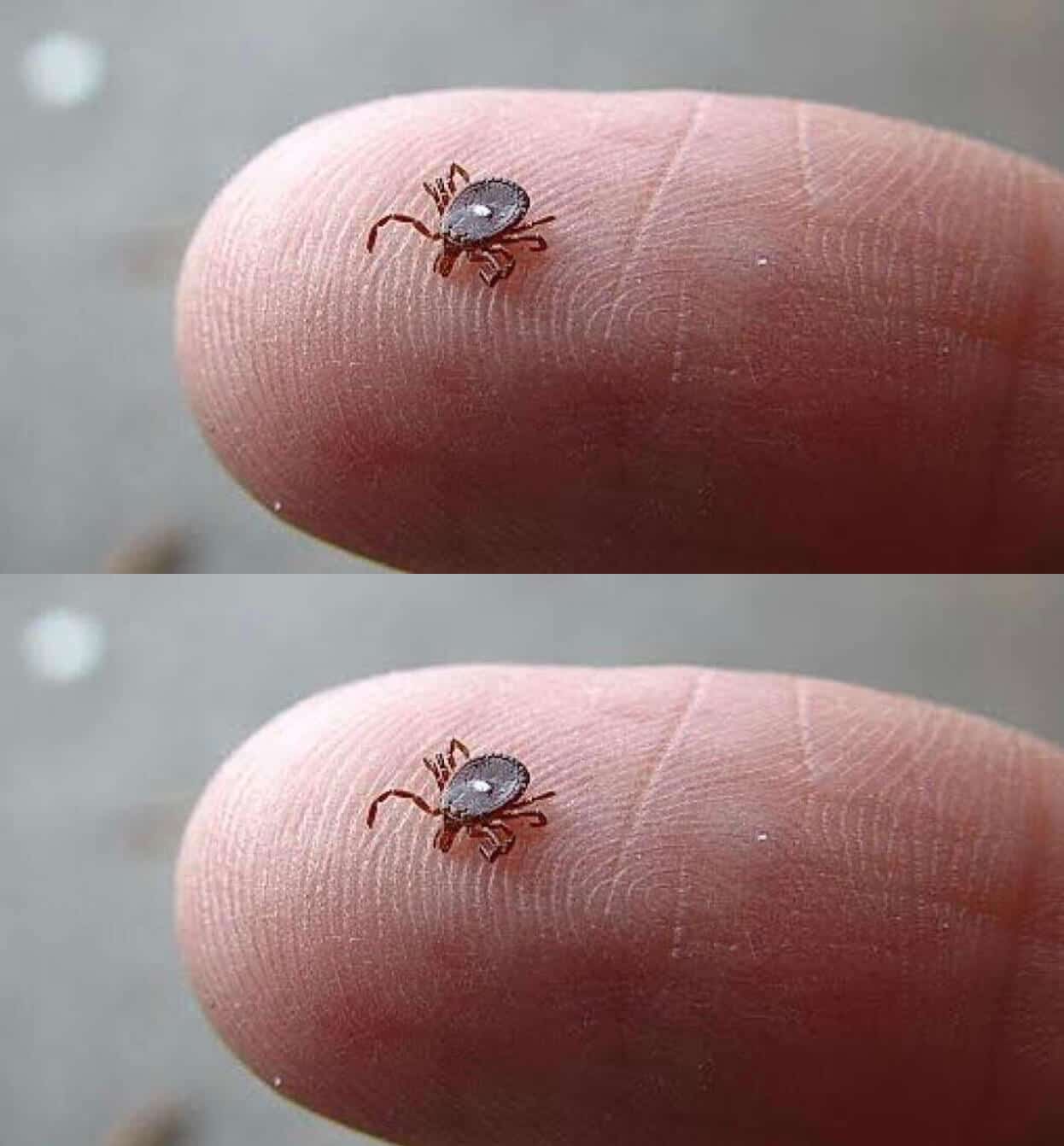A few weeks ago, I was out in the backyard wrestling with my old, barely-working lawnmower while my golden retriever, Mochi, was stretched out under the oak tree, looking way too relaxed for my liking. Out of nowhere, I felt this itchy, tickly sensation on my ankle. At first, I thought it was just a mosquito, but when I looked down, my heart nearly stopped. Stuck to my skin was a tiny black speck that refused to budge—a lone star tick, unmistakable with its little white dot.
Now, I’m the type of person who usually shrugs off nature’s annoyances. Mosquito bites? A little lotion, no big deal. Bee stings? Painful but manageable. But ticks? Oh no, that’s where I draw the line. They’re creepy, gross, and potentially dangerous. This was my first run-in with one, and if you’ve ever come face-to-face with a lone star tick, you know just how unsettling it is.

What Exactly Is a Lone Star Tick?
Unlike some ticks that just sit and wait for a host to wander by, the lone star tick is more aggressive. It’s named for the single white spot on the female’s back, which, honestly, is the only remotely “cute” thing about it. These ticks actively seek out hosts—yes, they will literally come after you. Just thinking about it makes me itch all over again. That’s why being able to recognize and deal with them quickly is so important, especially if you spend time in wooded or grassy areas.
Step One: Don’t Panic—But Move Fast

The most important thing you can do is stay calm. I know that’s easier said than done, but panic doesn’t help. If you find a lone star tick on your skin, remove it immediately because the longer it’s attached, the higher your risk of infection. Grab a pair of fine-tipped tweezers and carefully grasp the tick as close to your skin as possible. Pull it out slowly and steadily—don’t twist or yank it, or the mouthparts could break off and stay in your skin. Once it’s out, wash the spot thoroughly with soap and water or rubbing alcohol. And whatever you do, don’t crush the tick with your fingers unless you want its germs all over you. Gross, I know.
Step Two: Save It and Watch Closely
Here’s a mistake most people make—they toss the tick immediately. Don’t do that. As much as you want it gone, keep it in a small container or stick it to a piece of tape. If you end up needing to see a doctor, having the tick can help identify what you’re dealing with. Also, jot down the date and where on your body it was attached. Over the next few weeks, keep an eye out for anything unusual—rashes, fever, fatigue, or body aches. If any of those show up, call your doctor right away. Better safe than sorry.
Step Three: Take Preventative Measures
If you know you’ll be in tick-prone areas, take precautions. Wear long sleeves, tuck your pants into your socks (not a fashion statement, but effective), and use a repellent with DEET, permethrin, or picaridin. After being outdoors, thoroughly check yourself, your kids, and your pets. Around your yard, keep the grass short, clear away brush and fallen branches, and consider laying wood chips or gravel as a barrier between your lawn and wooded areas. If ticks are a recurring nightmare where you live, pesticide treatments may be worth it—we’re actually planning on doing this ourselves soon.
Final Thoughts
Seeing a lone star tick on your body can be downright terrifying—I get it, they’re disgusting and alarming. But if you stay calm, act quickly, and keep an eye on your health afterward, you can protect yourself from serious problems. The key is prevention, awareness, and making sure you don’t ignore the warning signs. With the right steps, you can enjoy the outdoors without living in fear of these little monsters.
